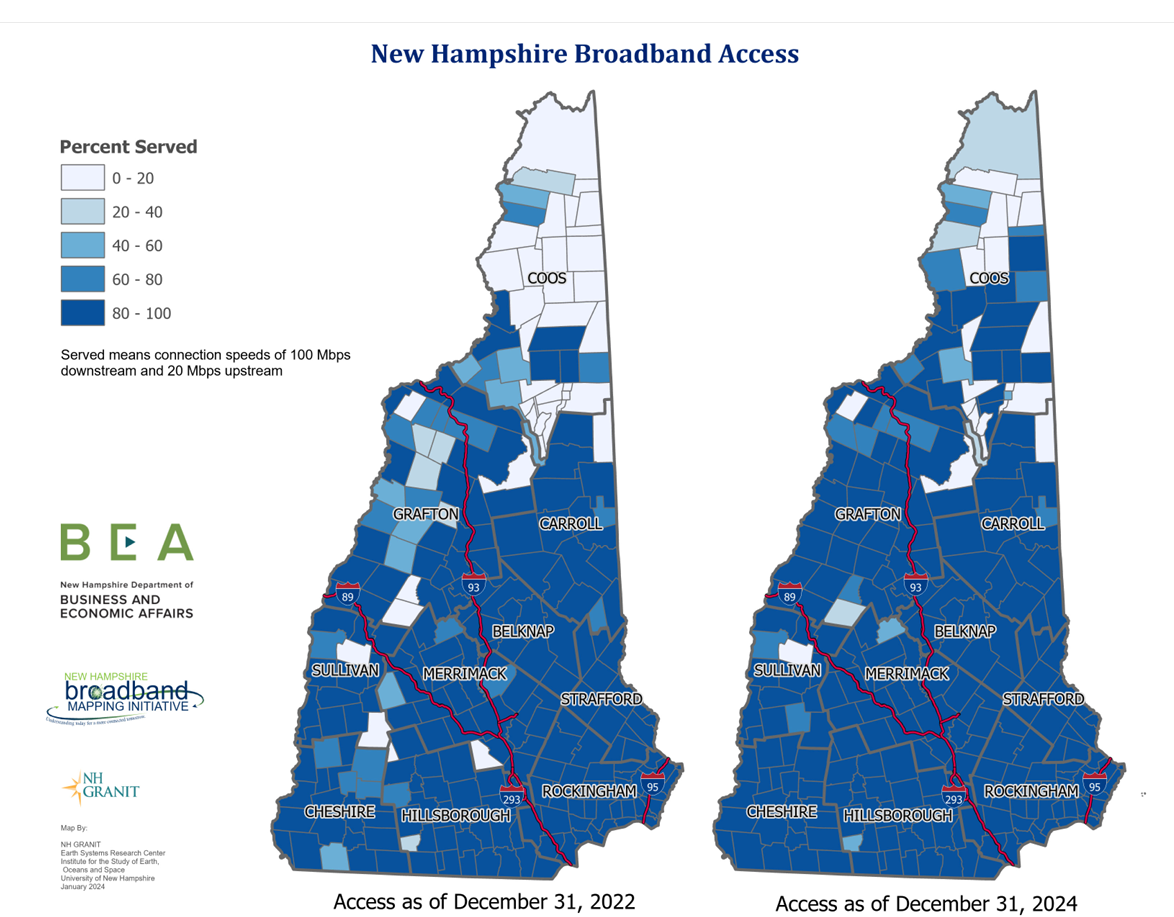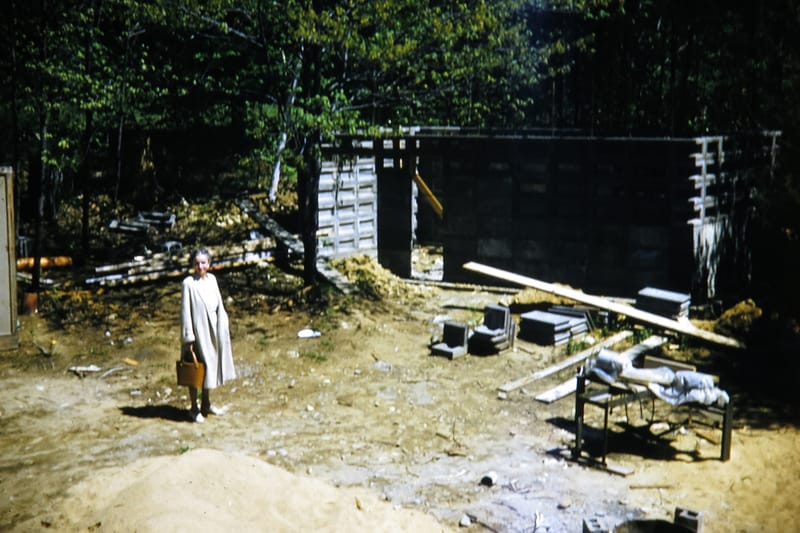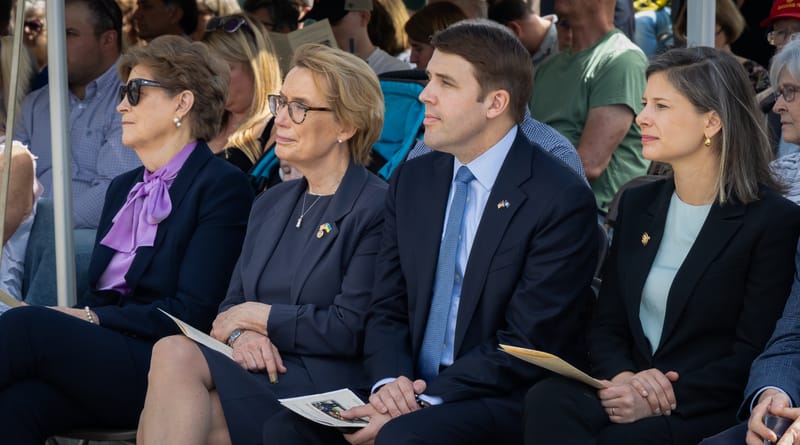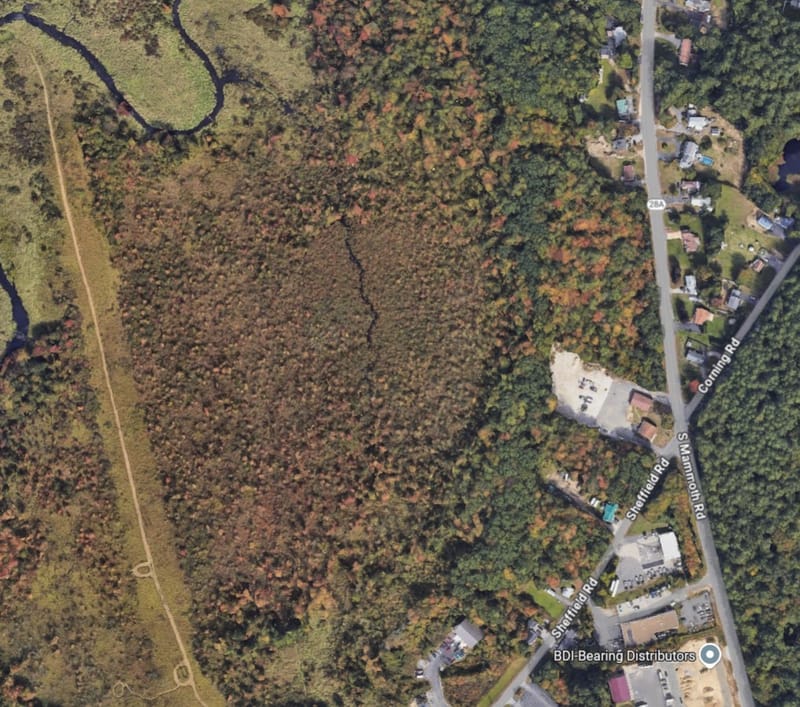NH more than halfway to meeting broadband access goals
The state is more than halfway to providing high-speed, reliable broadband to 48,000 unserved and underserved addresses across 115 municipalities, a $90 million effort funded by the American Rescue Plan Act.


CONCORD, NH – The state is more than halfway to providing high-speed, reliable broadband to 48,000 unserved and underserved addresses across 115 municipalities, a $90 million effort funded by the American Rescue Plan Act.
The project, part of $122 million provided to the state for broadband under ARPA’s Coronavirus Capital Projects Fund, must connect a total of 48,016 homes and businesses by the end of 2026. About 28,000 addresses, 58% of the goal, had been connected to high speed, reliable internet access by Dec. 1, according to a news release Monday from the state’s Department of Business and Economic Affairs, which administers the program.
“This was an historic investment and the results are significant,” BEA Commission Taylor Caswell said of the program, which is a key to the Biden-Harris administration’s goal to connect every American household with high-speed, reliable broadband.
Under the program, each state had to provide a plan that requires all service providers to participate in the Federal Communications Commission’s Affordable Connectivity Program, which helps provides a discount of up to $30 per month for households to ensure they can afford internet to help with work, school, health care needs and more. The FCC estimated in 2022 that about 48 million families in the U.S. are eligible for the program.
BEA contracted, for $50 million, with the New Hampshire Electric Cooperative to connect 23,259 addresses and Consolidated Communications (Fidium, for $40 million, to connect 24,757 addresses. The program began in September 2022 after the state’s plan was approved by the U.S. Department of Treasury in June 2022.
“Well over 1,000 miles of fiber was installed, much of it in rural towns, but also places like summit of Mount Washington, to help operations and communications at the state park and for the meteorologists at the Mt Washington Observatory,” Caswell said in Monday’s news release.
The state’s plan prioritized applications from providers that encouraged the maximum number of locations to be served at the lowest cost, and broadband networks that will be owned, operated by, or affiliated with local governments, non-profits, and co-operatives, the Treasury Department said in 2022.
New Hampshire’s plan was one of four initially approved in 2022. The other three states were Louisiana, Virginia, and West Virginia. The four states, when their projects are completed, will have connected 200,000 customers to high-speed reliable internet, according to the U.S. Department of Treasury, which funds the program. At the time, plans by 30 tribal governments had also been approved.
“The pandemic turned so many aspects of life online from work to school and laid bare the urgency of closing the digital divide for all Americans – especially those living in rural, Tribal, and low-income communities,” said Wally Adeyemo, deputy secretary of the treasury, when New Hampshire’s plan approval was announced in 2022. “Treasury’s broadband funding represents a significant step in the Biden-Harris administration’s unprecedented investment to increase access to high-speed internet and reduce broadband bills for every American household and business.”
The $90 million is part of $122,066,051 million in Community Project Funds that New Hampshire was awarded through ARPA. That portion of the CPF allocation was to provide internet service to the most rural parts of the state that lack internet service, and where it would not be possible to connect them without the money.
Most of the rest of the CPF money, $25,962,843, is for the Broadband Matching Grant Initiative, which is designed to fund broadband infrastructure projects to bring high-speed internet to areas currently lacking service of 100/20 Mbps. It provides a state match that is designed to alleviate the fiscal impact of community-driven broadband investment for both ISPs and municipalities and reduce reliance on bonding, according to Treasury Department. The remaining $6 million of the funding goes to administration costs.
The state’s 2024 annual CPF performance report is available online.





